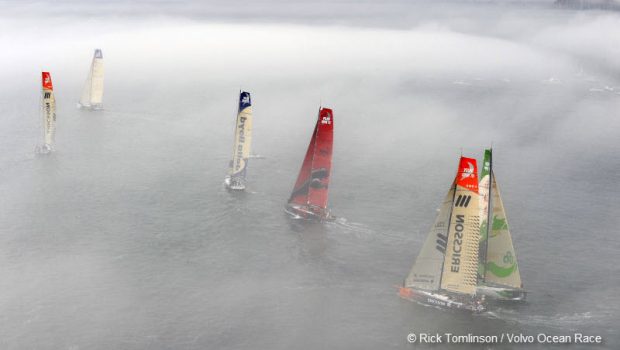When The Fog Rolls In
Published on March 3rd, 2020
Ask any offshore cruiser or racer about fog, and it’s likely they’ll have a story. Fog is not an uncommon condition, and it generally makes things interesting. The Quantum Sails experts share tips for safely navigating and sailing through fog.
Part I: How to Sail Safely
HOW FOG IS FORMED
Before we dive into the sailing tips, a quick note about how fog is formed may help you to better forecast it. There are a handful of different fog types (NOAA explains them here), but essentially fog occurs when moisture is involved with differing air and sea temperatures. So when warm, moist air moves across cool land or water, the moisture in the air will condense. Similarly, you’ll also get fog when you have a warm body of water that comes into contact with cool, dry air. Pay attention to unseasonable or drastic changes in temperatures, and try to find a spot where the water and land or air are similar temperatures.
Many weather forecasting services include fog in their predictions; however, it’s still a good idea to pay attention to the conditions that make it most likely to occur. If you want to learn more about forecasting fog, spend some time on NOAA.gov. It includes a wealth of information on all things weather-related. Full report.
Part II: Using Electronics When Racing
ELECTRONICS
Electronics are aids to your senses; they should be used as references but not as absolute truths. Remember that in all low-visibility situations, slower is safer. The US Coast Guard recommends operating your vessel at a safe speed of 3-5 knots when navigating in low visibility, a speed that allows you to react quickly and with the ability to stop at a moment’s notice.
ONBOARD RADAR SYSTEM
Like all equipment, get familiar with your radar system before a situation gets dire. The best time to practice using radar is when you don’t need it, such as on a calm day when there’s more than a few miles of visibility. Look at your radar display, confirm the different blips with visuals, and switch the radar range up so you can find its shortcomings. Depending on your system, switch the radar among the maximum, middle, and short distances, and practice having vessels and other objects in range so that you can test the system. Familiarity will help when conditions turn south. Full report.









 We’ll keep your information safe.
We’ll keep your information safe.